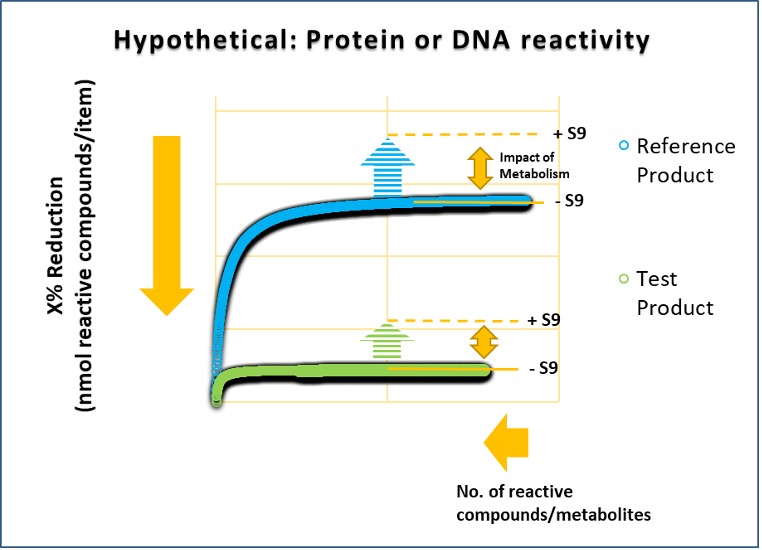How to Assess Reduced-Risk Products Faster Using a Chemical Reactivity-Directed Non-Targeted Screening Approach
Cigarette smoke is a complex matrix with more than 6000 constituents, and some are harmful and potentially harmful constituents (HPHC). Aerosols of the new reduced-risk products (RRP) developed at Philip Morris International (PMI) have different profiles, which have been already comprehensively characterized [1]. As portfolio extension of RRP is foreseen, methodologies aiming at quickly assessing their risk should be considered. The chemical reactivity-directed non-targeted screening (ChemReact-NTS) approach aims at supporting and speeding up decisions on these processes in the RRP development pipeline. This novel workflow simplifies the comprehensive non-targeted screening (NTS) process for toxicologically relevant compounds by addressing their chemical reactivity towards relevant biological macromolecules such as proteins and DNA.
The underlying mechanism of our approach focuses on the potential of HPHCs (or their metabolites) to react with essential biomolecules and generate adducts — an accepted rationale for initiation of toxicity. Adducts are then identified and semi-quantified in chemico by liquid chromatography coupled to high-resolution accurate-mass spectrometry (LC–HRAM-MS) [2, 3]. Further, ChemReact-NTS addresses potential adduct formation with or without metabolic activation of HPHCs [4].
The ChemReact-NTS workflow will be used to rapidly prescreen the overall effects of accumulation of adduct signals in terms of adduct numbers and represented mass. Later, detailed information on the identity of the reactive chemicals and their relevance can be derived by ranking the reactive chemicals on the basis of their represented levels at a given time (or adduct formation rates). Assuming the proposed methodology proves to be relevant and suitable, the information collected will be used to generate product-specific HPHC lists and to refine and update our risk assessment strategy. This effort will materialize by assay design in the context of safety and toxicity assessment using data that will generate relevant information.

[1] M. C. Bentley, M. Almstetter, D. Arndt, A. Knorr, E. Martin, P. Pospisil, S. Maeder, Anal Bioanal Chem, 2020, 412(11), 2675-85.
[2] M. E. Andersen, H. J. Clewell, P. L. Carmichael, K. Boekelheide, ALTEX, 2011, 28 (3), 175-82.
[3] S. J. Enoch, M. T. Cronin, Crit Rev Toxicol, 2010, 40 (8), 728-48.
[4] J. Ashby, R. W. Tennant, Mutant Res, 1988, 204 (1), 17-115.